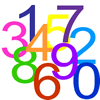Skip over navigation







Or search by topic
Number and algebra
Geometry and measure
Probability and statistics
Working mathematically
Advanced mathematics
For younger learners
How Well Do You Know Your Quadrilaterals?
 The problems and games in this feature will challenge you to visualise quadrilaterials and may help you gain a better understanding of their properties.
The problems and games in this feature will challenge you to visualise quadrilaterials and may help you gain a better understanding of their properties.
The last day for sending in solutions to the live problems is Monday 15 May.
Square It
Age 11 to 16
Challenge Level 





Players take it in turns to choose a dot on the grid. The winner is the first to have four dots that can be joined to form a square.
Parallelogram It
Age 11 to 16
Challenge Level 





Players take it in turns to choose a dot on the grid. The winner is the first to have four dots that can be joined to form a parallelogram.
Tilted Squares
Age 11 to 14
Challenge Level 





It's easy to work out the areas of most squares that we meet, but what if they were tilted?
Rhombus It
Age 11 to 16
Challenge Level 





Players take it in turns to choose a dot on the grid. The winner is the first to have four dots that can be joined to form a rhombus.
Square Coordinates
Age 11 to 14
Challenge Level 





A tilted square is a square with no horizontal sides. Can you devise a general instruction for the construction of a square when you are given just one of its sides?
Opposite Vertices
Age 11 to 14
Challenge Level 





Can you recreate squares and rhombuses if you are only given a side or a diagonal?
You may also like
Patterns in Number Sequences
These resources are designed to get you thinking about number sequences and patterns.

